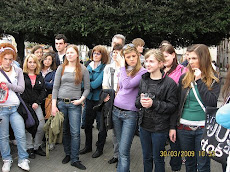
Folklore is the integral part of the cultural heritage of a community. It has been shown that in the popular traditions we can see the presence of fragments of the conceptions of the world and the life which occur in in the history of a country. They can be seen as the '' cultural assets '' which ''are an important witness of the history, the civilization and the culture ''.
The most suggestive aspect of folklore is a folk festival; and when it takes root in the tradition of the local community, it can be considered as a '' creative moment '' where people show their fervour, freshness and passions.They open a way in the everyday banality to penetrate the dimension of the meaning. This is what happens with the traditional Festival of the Lilies (“Festa dei Gigli”) in Nola, an ancient city not far from Marigliano and the Festival of "Lucerne" in Somma Vesuviano, a medieval town dominated by Mount Somma and Vesuvius, he famous Volcano of Napoli's Bay .
The Gigli's Day of Nola ( on Sunday following June 22) consists of a procession eight obelisks of 25 metres and a boat which are carried on men's back to the sound of music. It is an allegorical journey tale which explains its origins.This festival is famous in many countries abroad, particularly in Southern and Northern America, particularly in USA where it is known as the Dance of the Giglio.

What is The Dance of the Giglio?Imagine 125 men carrying a Five-Ton, Five-Story, Hand-Sculptured Tower and a 12- piece Brass Band on their shoulders dancing it through their neighborhood in tempo to joyous Italian folk songs
Why is a Giglio danced? For over 300 years in Italy, and the past century in communities throughout the greater New York area, this glorious ritual known as 'The Dance of the Giglio' has been celebrated each Summer with unbridled passion and devotion. This annual 65 to 85 foot-high moving monument to faith, folk-art and family honors a Roman Catholic Saint, San Paolino di Nola and his heroic act of sacrifice & valor in the ancient Italian city of Nola in the year 409 AD.
Where and When is the Giglio danced? In America, the Giglio is danced yearly at the following Italian-American Feast celebrations within the greater New York metropolitan area -- at the Feast of Our Lady of Mt Carmel and San Paolino in Williamsburg, Brooklyn; at Our Lady of Mt Carmel in East Harlem, Manhattan; and at the Festa del Giglio Feast at the Sunrise Mall in Massapequa, Long Island, New York. In Nola, Italy where the tradition began in 409 AD eight Monumental Gigli spires are danced annually on the Sunday following June 22, San Paolino day. This looming, moving and monumental dancing ritual to faith, folkart and family is also celebrated in the cities of Brusciano and Barra, in Vesuvius' area.
The festival of "Lucerne" is very ancient;its origins are pagan but, by passing the time, in the centuries of chritianization of the land, the pagan rites were interwoven with Christian elements. The popular tradition of the old peasantry culture is expressed in the simplicity of the rituals. The inhabitants of the medieval district of Casamale spend several days in preparing the feast which occurs only every four years, by arranging all the tools which reminds the pagan symbols,.They show wooden geometrical items, particularly triangles, with small shelves where to put oil lamps. People sing and dance all the night, wearing traditional costumes. When the feast ends, everything is removed and stored in cellars.
Anyway more details, full of imagines, pictures and scenes will be displayed in the works we are preparing for our partners.









1 commento:
How interesting to read about the link between your and the Greek culture, and to see that the tradition is still alive in the USA.
Posta un commento